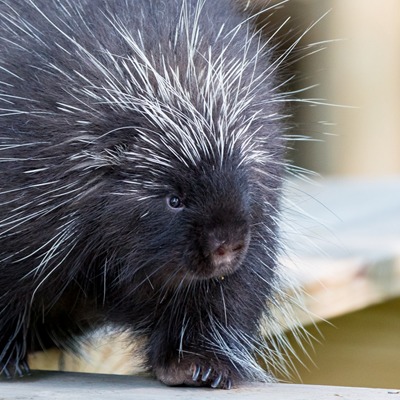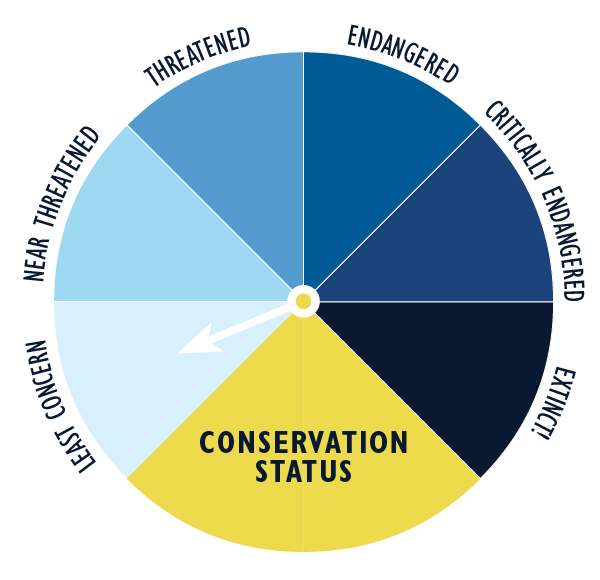
About North American Porcupine
The North American Porcupine is the second largest rodent in North America, out-sized only by beavers, and is characterized by its stout, lumbering form and spiny coat. Like porcupines found in other parts of the world, North American porcupines have arboreal adaptations, such as long claws, that allow them to navigate the large trees in their habitat.
Habitat
North American porcupines are native to the coniferous and mixed-forest habitats of Canada, the northeastern and western areas of the United States, and northern Mexico. This species can also be found in grasslands, desert shrub, and sometimes even the tundra.
Diet
This species is a generalist herbivore whose diet varies throughout the year in response to small changes in plant chemistry. In spring and summer, when high protein foods are readily available, feeding rates are reduced and in the autumn, feeding rates increase in preparation for the winter food shortage.
Family Life
North American porcupines breed once a year and are considered female defense polygamous, which means that a male defends a female for one to four days prior to breeding. For the first six weeks after birth, parental care is provided by the mother.
Conservation Status
The conservation status of the North American Porcupine is classified as least concern.
Threats
- The North American porcupine uses a unique set of anti-predatory skills to defend themselves from natural threats. With over 30,000 sharp quills on the average porcupine, the rodent will use these to its advantage by remaining in a defensive position to deter predators from attacking. This, however, is one of their last lines of defense, as it will first utilize several other methods to ward off potential threats.
- Larger predators like bobcats, lynx, wolves, and coyotes have over time adapted to the porcupine’s defense system, becoming increasingly more formidable.
- Human interaction also poses a threat to the species, as the rodent will often chew on housing structures, plywood, or anything with a salt residue. This behavior will often put humans in direct conflict with the rodent species.
Facts about North American Porcupine
Class:
Mammalia (mammals)Order:
Rodentia (rodents)Family:
Erethizontidae (new world porcupines)Genus:
ErethizonSpecies:
Erethizon dorsatum (North American porcupine)Life Span:
18 years (wild) / 12 – 17 years (zoo)Size:
2 – 3 feet (60 – 90 cm)Weight:
20 pounds (9 kg)
Fun Facts
- The crucial resource for porcupines is nitrogen, which is found in the bark, twigs, and evergreen needles that they consume.
- They use a combination of acoustic, chemical, visual, and tactile communication.
- North American porcupines have 30,000 quills on their dorsal side.